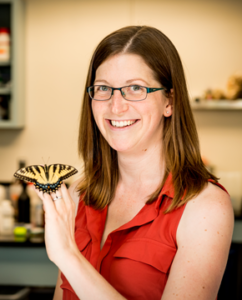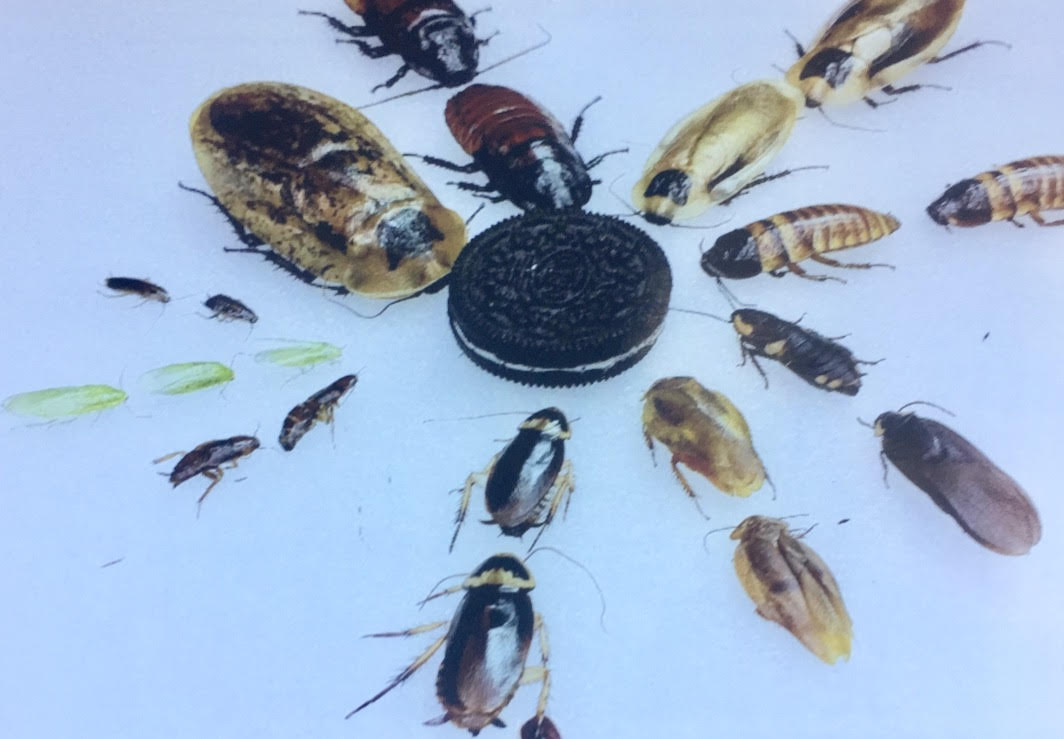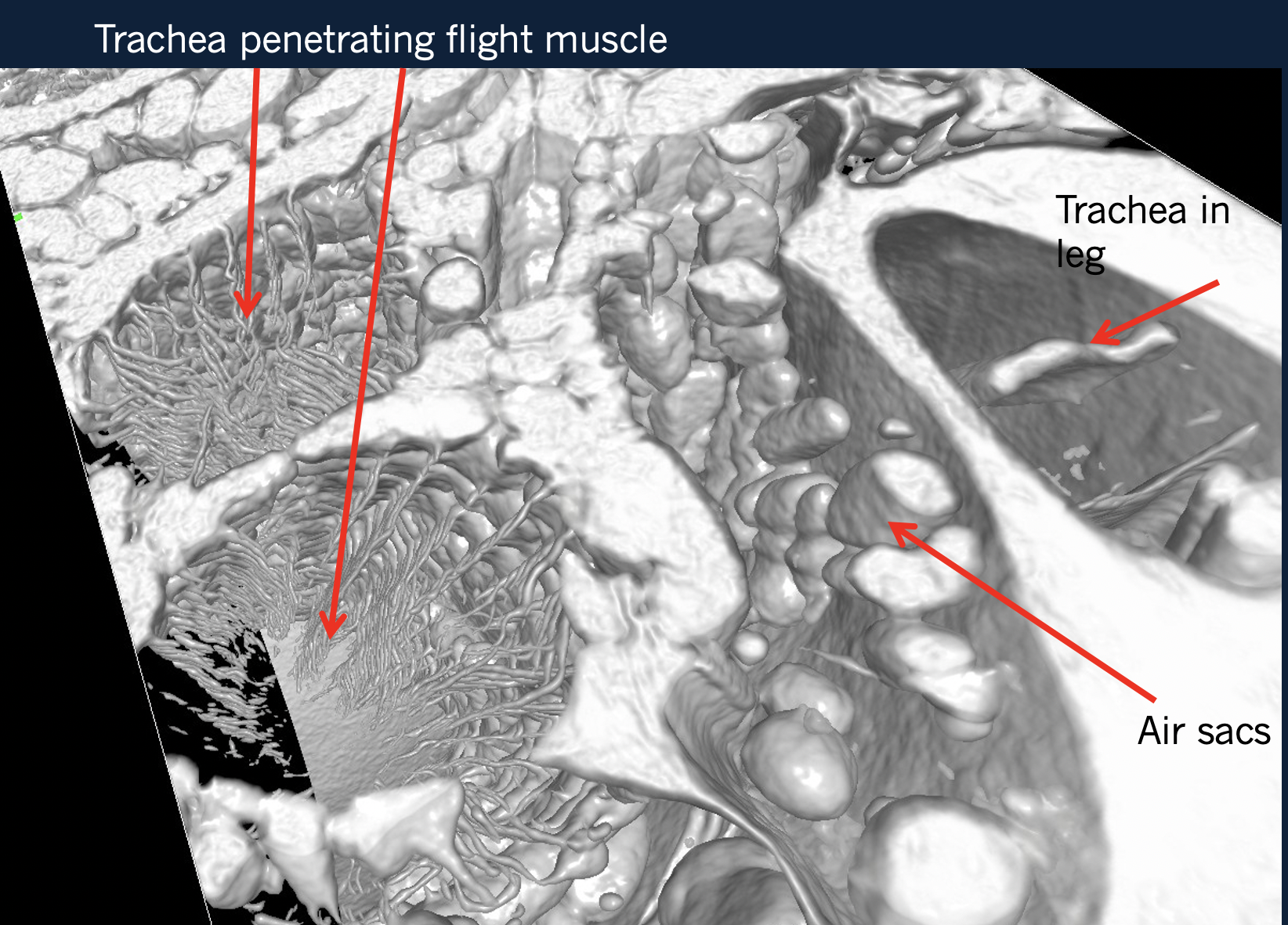Written by Andrew Saintsing
Nature is full of awe-inspiring things, like a butterfly’s scaly wings diffracting light to produce brilliant color. For comparative physiologist Dr. Jon Harrison, wonder at the natural world sparked a lifelong passion in the rules of biological scaling. “I’ve always loved the stories about giraffes and their huge hearts and all the adaptations they have to be able to have such long necks and achieve those sizes.” But understanding how the forces of physics, chemistry and evolution shaped those adaptations is not easy.
A deep understanding of biology requires consideration of many perspectives, ranging from biomaterials to physiology to ecology. Like Harrison, Dr. Emilie Snell-Rood is a biologist with a deep appreciation for nature, but she also strives to ensure everyone, not just biologists with doctoral degrees, can fully appreciate life in all of its multifaceted splendor. Bioinspired design is central to her goal.

According to Snell-Rood, the process of bioinspired design is “problem-based, and you can take a problem, distill it to a function, come up with biological analogies, and then explore the space for ideas.” For example, clothing designers solving the problem of fading color could distill the function to color production, and then use, say, the structural coloration of butterflies as a solution. From textiles to robotics, bioinspired design could lead to breakthroughs, and it’s also a great tool to engage the public. “It makes all of this totally random-sounding biology immediately potentially relevant,” says Snell-Rood. Still, she worries that non-academic biologists may not appreciate the complicated realities of nature. She wants to caution people against letting their assumptions cloud their perceptions of the natural world.
For example, Snell-Rood says designers interested in built environments, which account for how different human activities interrelate, often come to her “with an assumption that nature is harmonious and all the things in the forest are happily coexisting.” She tells them that specific cases of altruism could inspire a built environment but conflict is abundant and cooperation cannot be assumed. Snell-Rood wants to compile similar advice into a series of six modules (the first of which formed the basis of her talk at SICB this year). This series will equip engineers, designers, and others with the tools they need to draw informed inspiration from nature.
Snell-Rood wants her modules to be comprehensive but approachable. An engineer designing a fast-running, cheetah-inspired robot needs to know that cheetahs complete many tasks to survive; the best version of the robot would not replicate features which, while vital to living cheetahs, compromise running speed. However, that engineer doesn’t need to know all the evolutionary drivers that shaped the modern cheetah. That work falls to biologists who, like Jon Harrison, have the necessary time and resources.
At this year’s conference, Harrison showed just how complicated and time-consuming the work of a biologist is. Driven to understand why insects are small relative to vertebrates, Harrison has spent over 20 years investigating whether an insect’s oxygen delivery system could limit its body size. “It’s just one of those patterns that we look around and accept, but to me it’s disturbing that we don’t understand why,” says Harrison. Over the years, various biologists have proposed explanations—from the material properties of insects’ exoskeletons to the effects of predation. But a hypothesis from the 1990s suggesting that prehistoric levels of atmospheric oxygen drove increased insect body size inspired Harrison to question how the insect’s respiratory system, the tracheal system, varies with body size.

In the following decades, Harrison and colleagues collected multiple species of cockroaches and scarab beetles, which range from 50 mg to 35 g, and used X-ray and micro-CT imaging techniques to quantify the volume of each specimen’s tracheal system. For both types of insects, the researchers found that the proportion of the body volume devoted to the tracheal system was fairly consistent, regardless of body size. But if they only considered the insects’ legs, they found that the proportion of leg volume devoted to the tracheal system increased with insect body size.

To explain these observations, Harrison and his colleagues considered the function of the tracheal system, which delivers air from holes that line the sides of an insect’s body directly to all the cells that need oxygen. There aren’t any openings on the legs, so the tracheal system has to carry slow-moving oxygen from the side of the insect’s body down the length of its leg. Increased tracheal volume in the legs may compensate for a slow pace of oxygen delivery by increasing the amount of air going into and out of the legs. Harrison and his colleagues argue that the maximum body size of an insect occurs when any further increases in tracheal volume would crowd out other vital structures like muscles and nerves. Their compelling hypotheses could motivate new biological research.
Both Harrison and Snell-Rood demonstrate how engaging and rewarding the work of a biologist can be—if one has the time, patience, and resources for it. Thankfully, Dr. Emilie Snell-Rood works to ensure designers and other inspiration seekers can also access that hard-won knowledge. Life is as messy as it is beautiful, but there’s always a biologist willing to help make sense of it.
Author information: Andrew Saintsing is a PhD candidate in the Department of Integrative Biology at UC Berkeley. He studies how insects deal with challenges, like leg loss and uneven terrain, during walking and running.

